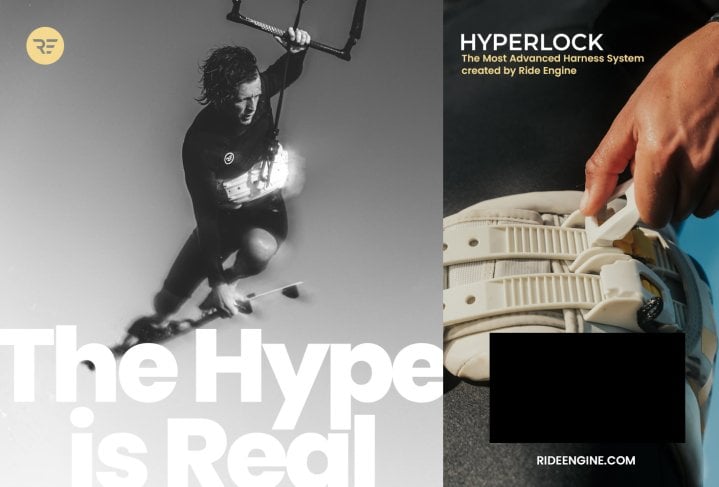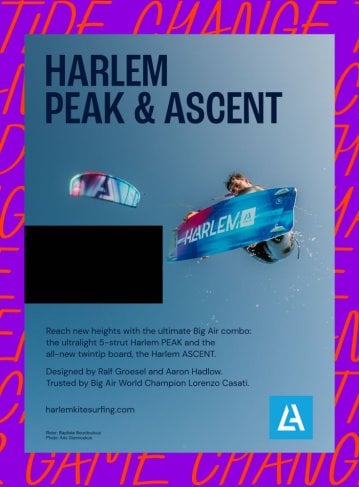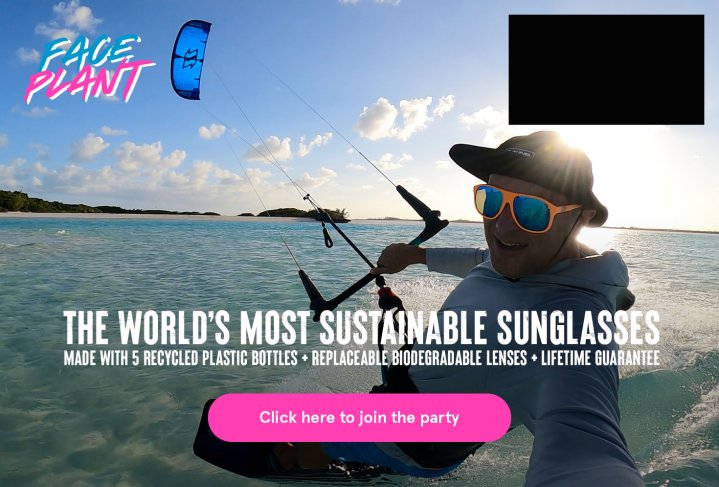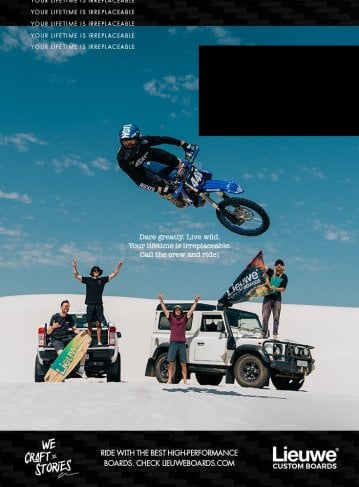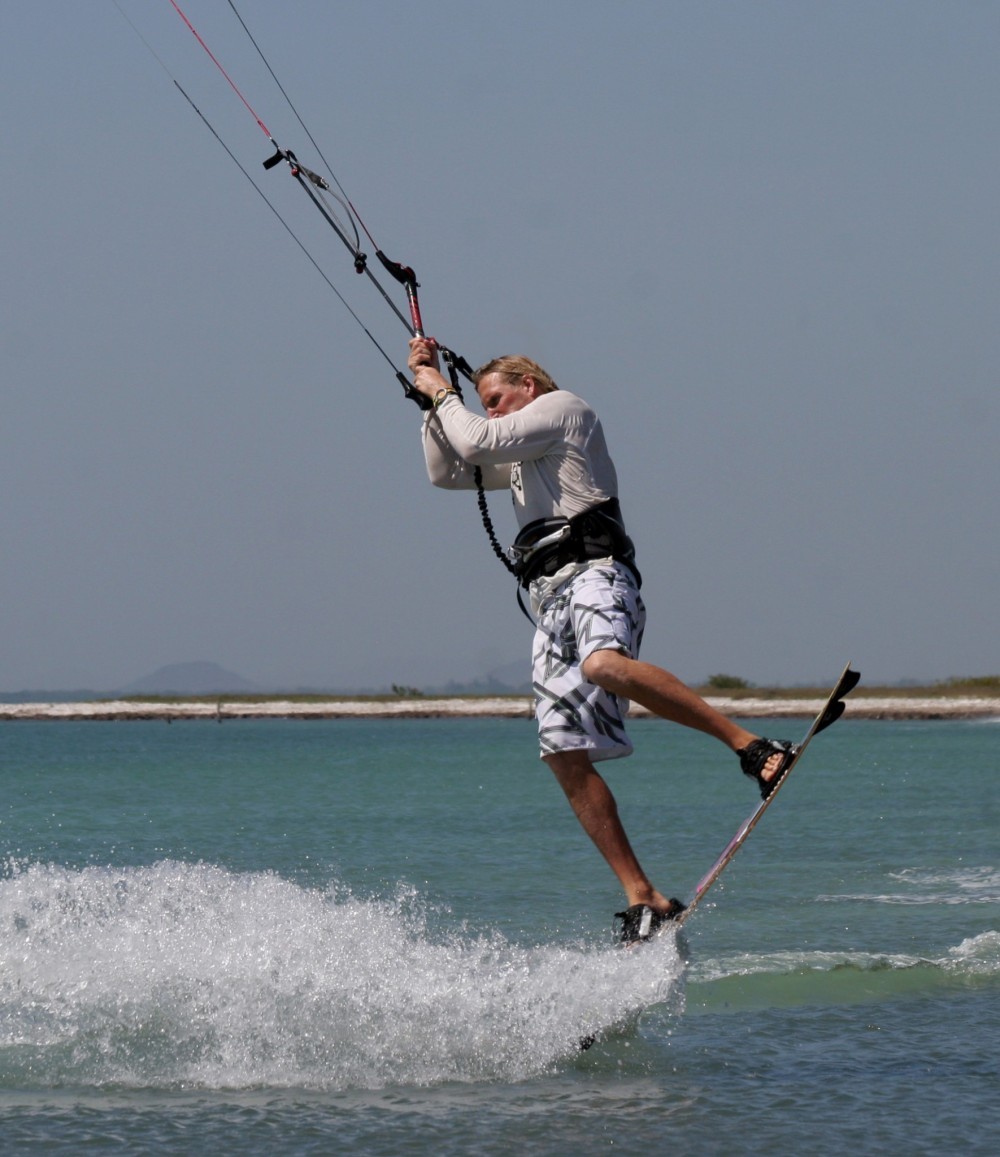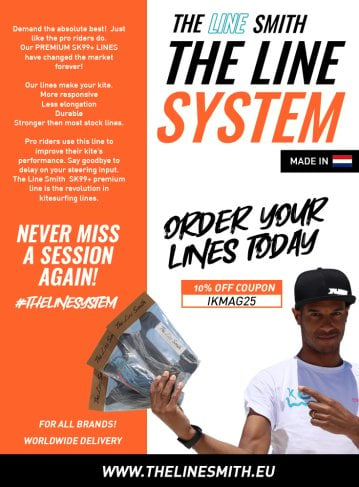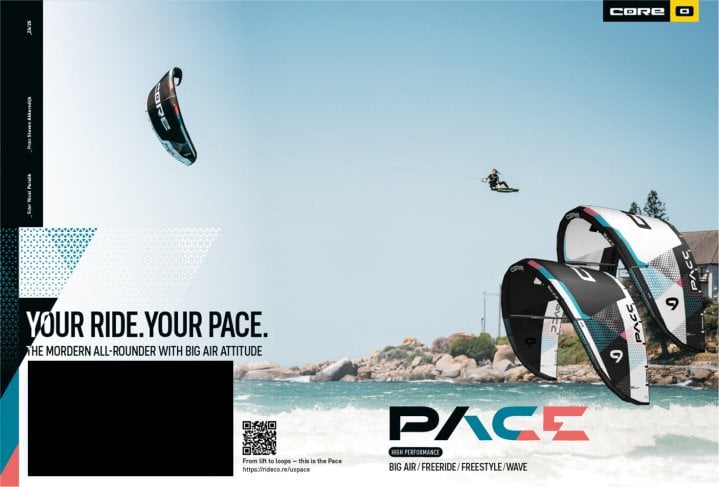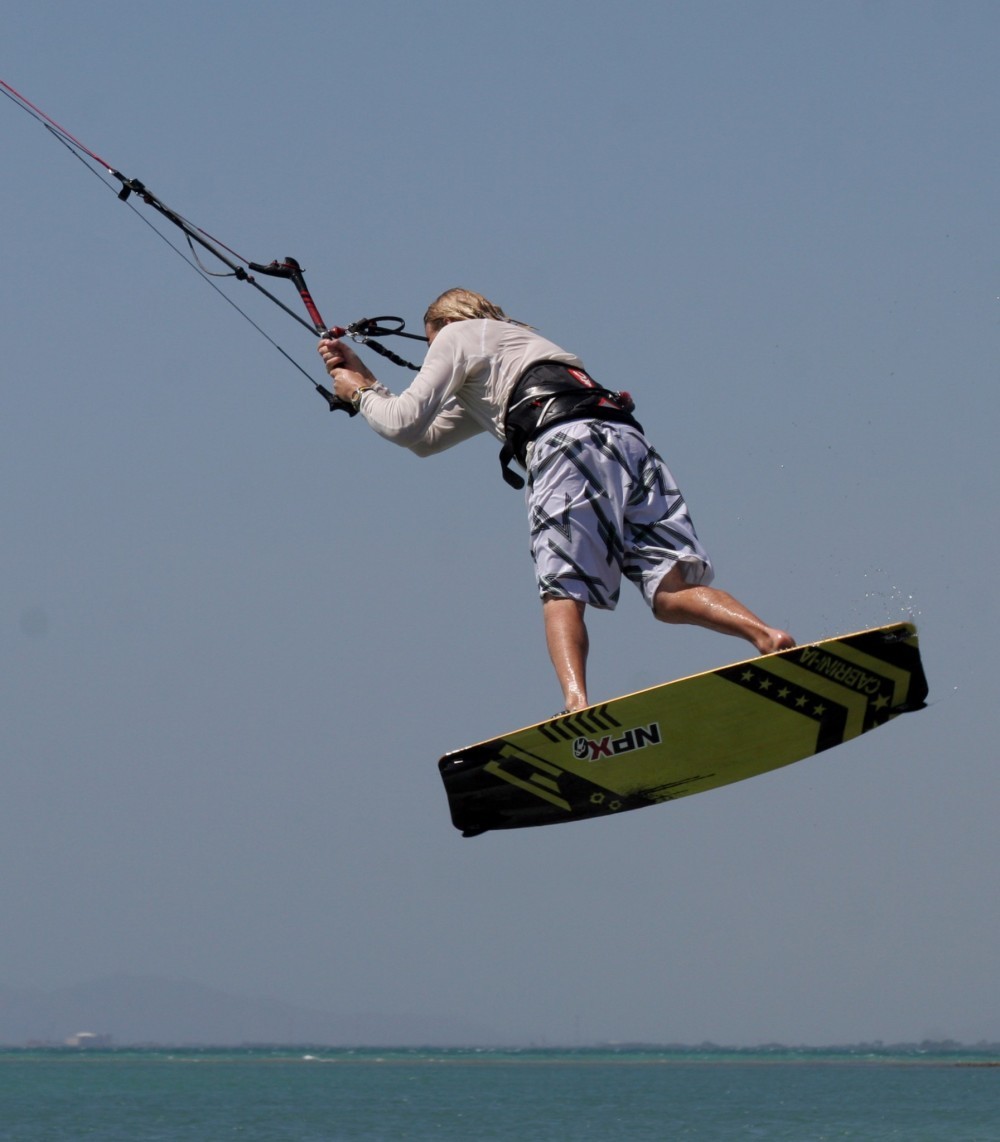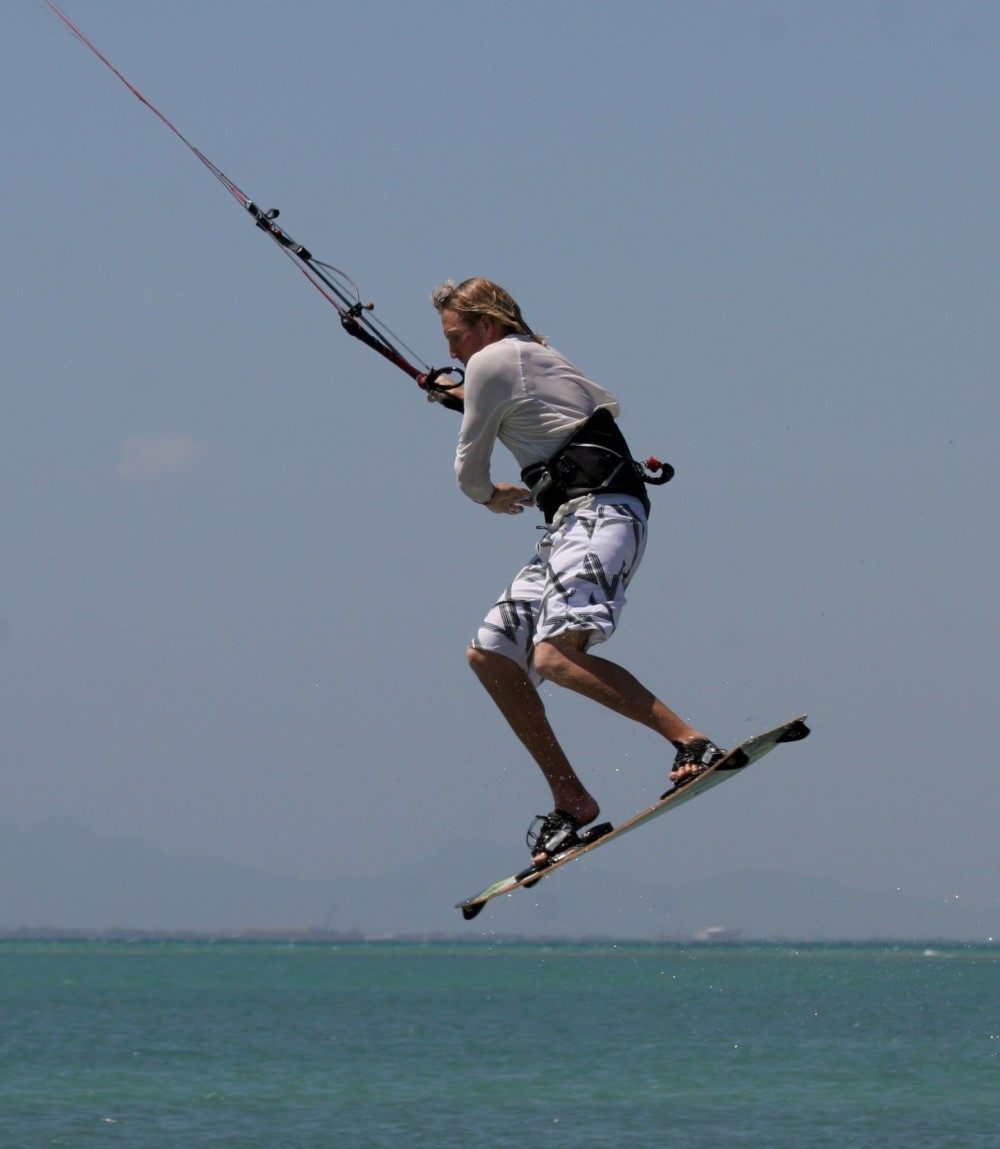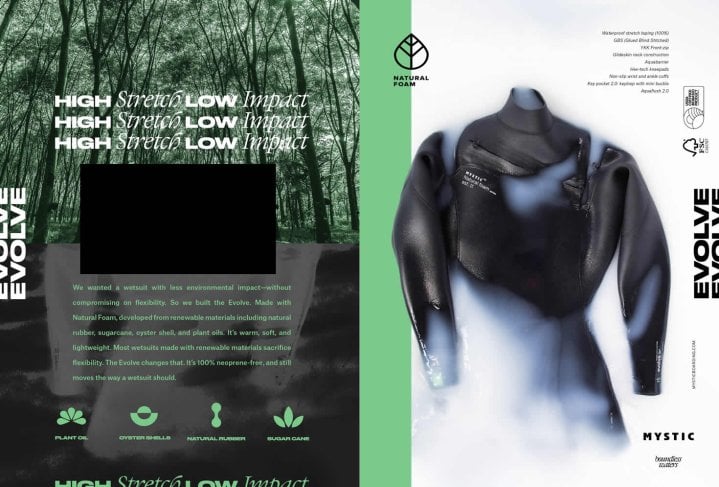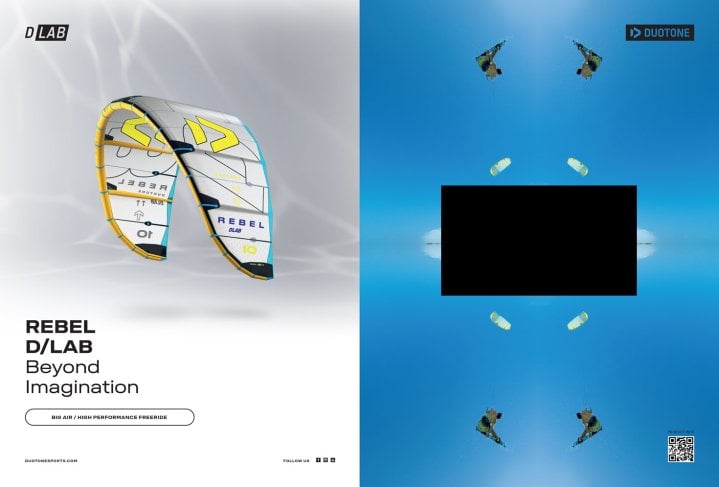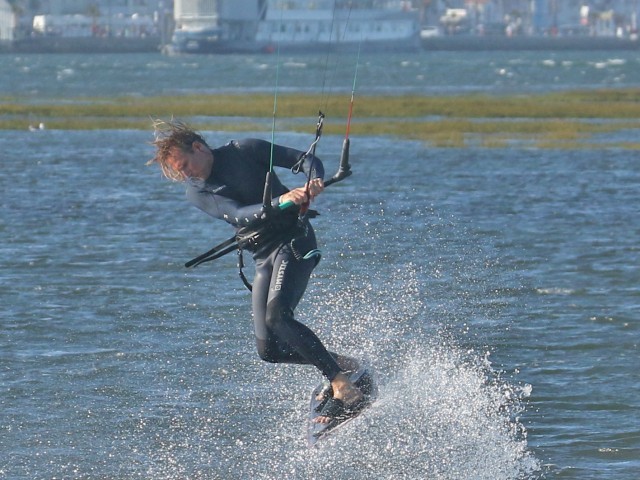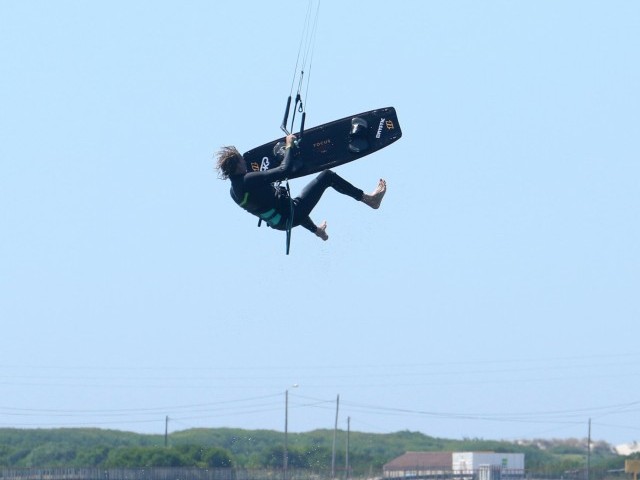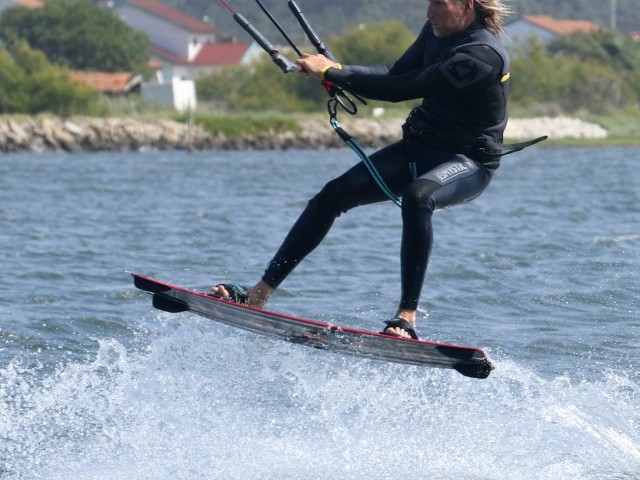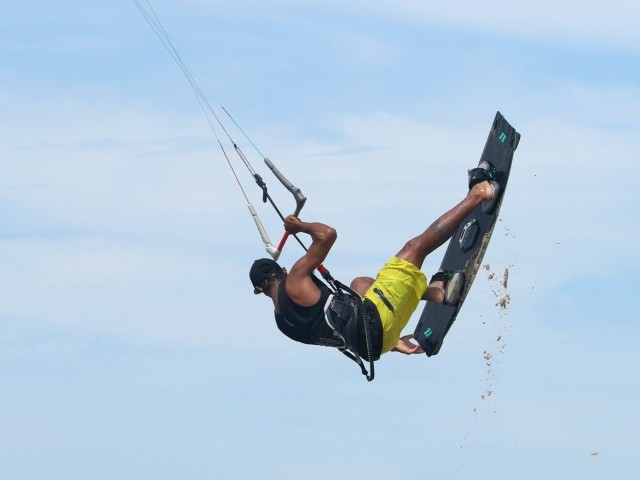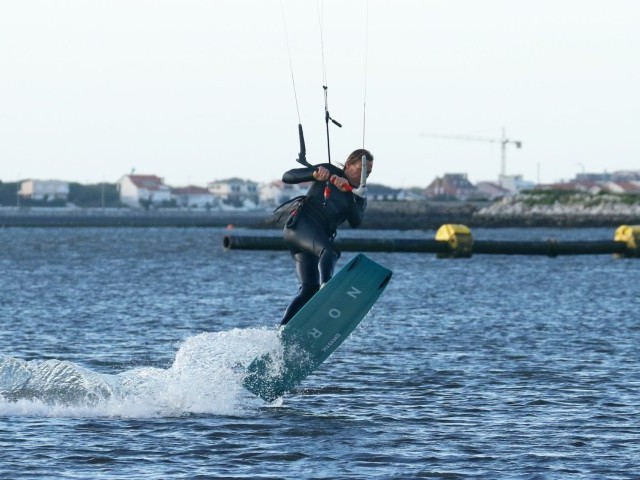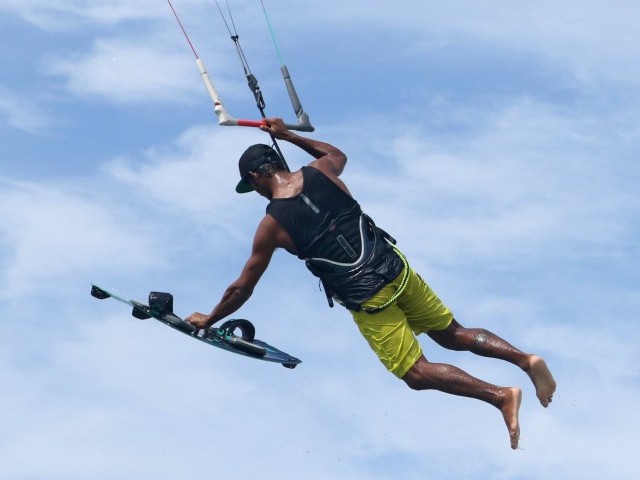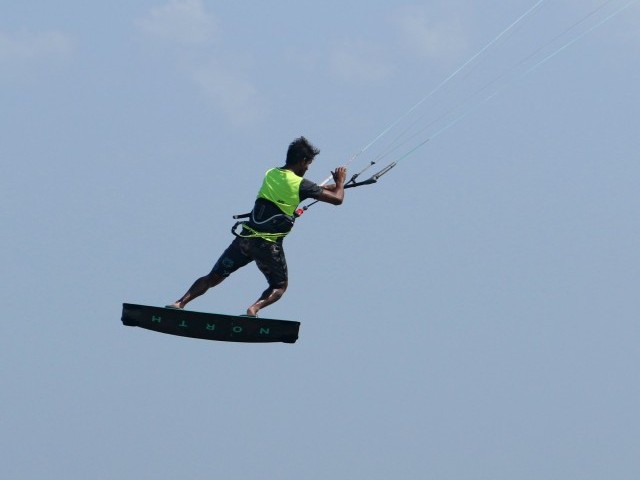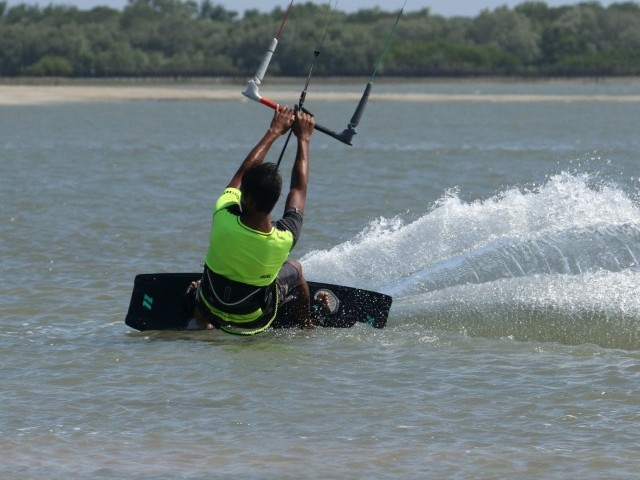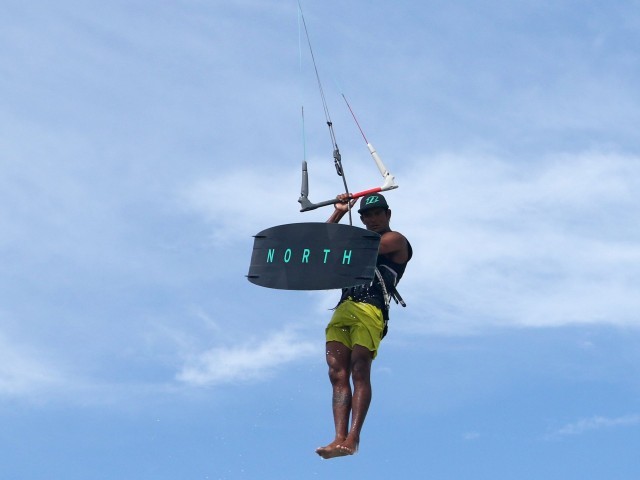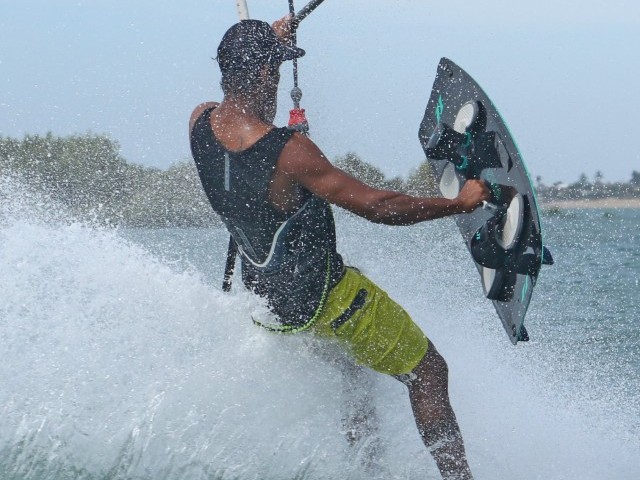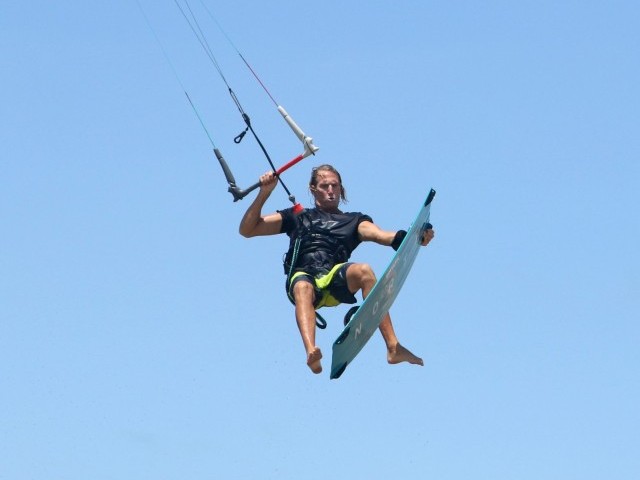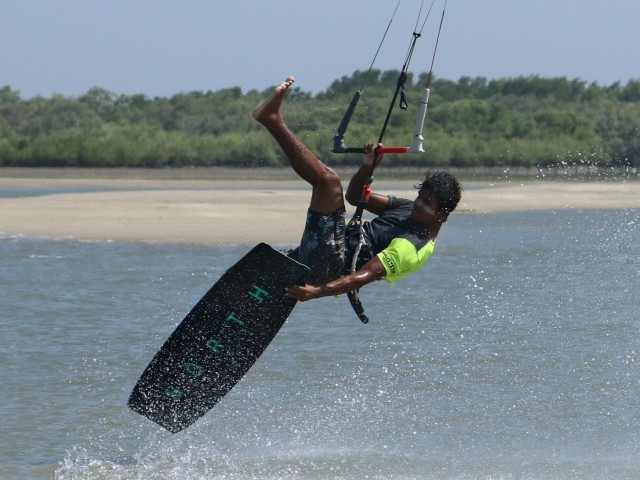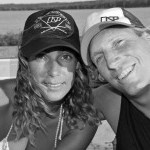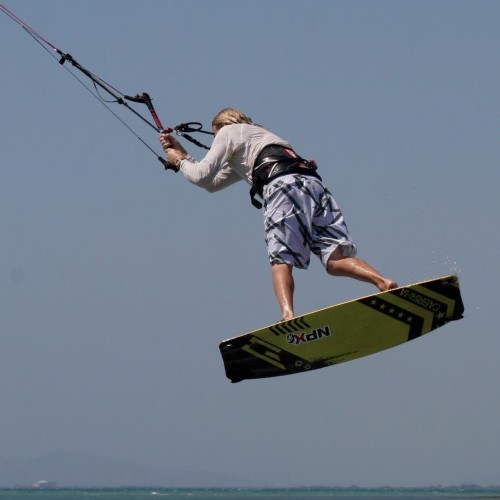
Kite Loop to Wrapped
Technique / Advanced
Introduction
The kite loop to wrapped is a desirable move in its own right which shows good control and is a pleasure to land. However it is also the ultimate stepping stone and building block to a kite loop 3. The advantages of learning the wrapped version first are many.
Firstly you have more time to concentrate on the kite loop as the timing for the rotation is a last minute thing, so rather than anticipating the moment to spin you can wait for it. Secondly you don’t need as much as height, so therefore you can get away with less power which makes for a more pleasant learning experience. Thirdly as a result of both of the above to succeed will be all about technique and nothing to due with brut force, so once you’ve got it you can move onto the full 3 version with confidence.
If you’re coming into this as a relative new recruit to wrapped may we suggest that you work on your shifty to wrapped first as this is the principal building block of a fast rotation to wrapped. Find out more in iksurfmag issue 15. And without wanting to be to pedantic, we presume that before trying this you will have some experience of an unhooked kite loop!
The Important Bits
As with all moves we’ve picked out a few key moments, which make all the difference if they are done correctly. These are also the areas in which most kiters struggle, so get these sorted and the move will be yours.
1. The Take Off
Whether you be going for a kite loop with or without wrapped or a pass, what your kite does will effect your chances of success! And what your kite does is dramatically influenced by your approach and take off. As you’ll be learning this move with a fish pole grip, you have no way of controlling the speed at which your kite loops with your hands, so instead it’s the rest of your body.
Chances are when you first tried an unhooked kite loop you changed your hands and the kite looped before you had time to think, pulling you off down wind violently and most likely without any air? The simple reason for this is that you need to pop to get off the water and let the kite do the rest once you’re up. If you just edge hard, you put more tension on the lines and the kite turns even quicker.
In Pic A. Christian has literally just eased off down wind with the kite at 11:50, unhooked and reached under and back with his front hand to grab the back of the bar and immediately popped up off his back leg. You can see how his entire body from feet to shoulders is aimed upwards and not back against the pull of the kite. Because the kite is not ripping him up off the water he is able to keep his arms bent and thus keep the bar close to him!
Because he is no longer resisting against the kite it will turn slower and because he has popped up the kite will float up and give him more height even without a lot of power. The longer Christian carves on the water the more violent the rip from the kite, the further back the kite loop and the lower the resultant jump.
This will only be possible if you unhook with your front leg pushed out in front of you, your hips dropped right back over the back foot and you shoulders back. From this position you can quickly carve and pop.
2. The Shifty
Using the term shifty loosely, as we don’t want to get into any discussions about style, lets agree that in this case what we mean is the extension of the back leg behind us. As with the shifty to wrapped by kicking your back leg behind you whilst in the air, you then can bring the knee up and through which will help you rotate faster and further. For sure there are many riders who rotate without extending their leg first but we’re in the market of making this easier for all involved, and this definitely helps.
The other advantage to this position is that it enables you to use the “flick” of the kite. This being the point at which the kite tries to knock you off balance, usually by swinging your legs forward as the kite moves back. With the back leg extended you can then pull the knee up towards you to regain you balance and increase your rotation speed.
In Pic B. you can see that Christian has kicked his back leg and foot up behind him as the kite pulls. As with the shifty to wrapped Christian has not let his arms extend, but keeps the bar close to him. Looking at the picture you can see that there is almost a straight line running from his hands through his back knee to his rear foot. If you were watching the kite it would just be turning through the bottom of its arc and starting to rise.
3. The Rotation
More leg work here. It’s all about getting your hips, legs and board to turn. Your upper body will follow your head but if you don’t get the lower half moving nothing will happen.
In Pic C. Christian is dropping and feels that there is much less pull in the bar. This is his queue to start spinning, and this is the advantage of learning to wrapped. In a KL3 it would now be too late. In this picture there are two very important things going on.
Firstly if you look at Christian’s right foot you can see how it is lifted off the footpad. This shows just how aggressively he has pulled his knee, foot and the rear of the board forward towards his hands. He was only able to do this because of the shifty.
Secondly look at the position of his left hand. It is almost wrapped around him. This is because Christian has not pulled the bar into his back hip, but rather he has pulled the bar past his hip and down as if he were pulling a paddle along the side of a raft. So the hands have been drawn down towards where the back foot was and the knee had been brought forward to get the board under the bar and the bar under his shoulders.
Once the board is under Christian he can then rotate with his head to get his upper body around on a vertical axis. If he rotated before the knee came through the board would be left behind, Christian would rotate off axis and be pulled off balance.
A Few Final Pointers
As is the way before you go for any wrapped landings, give yourself more chance by knocking out a handful of unhooked kite loops first. Think about going up early, extending the back leg and feeling the pull disappear as you drop. This way you’ll get a feeling for when you need to spin and also you can get comfy with the right amount of power and height. If you feel massive power and huge height it may not be the day to try.
Ponder your kite trim too. You want your kite to be looping an arcing circle, not to be turning around its wing tips. On the majority of kites if you don’t trim them down enough to unhook, they will flare/reverse/stall. This will result in a tight wingtip axis and won’t give you the feeling you need or the much chance of succeeding. Small and controlled is better than wild and unpredictable as you can build on it.
Following Sequence 1
- Pic 1. Having had a good look around to make sure he’s got plenty of space Christian moves his kite up to 12 o’clock. He’s pushed his board off the wind with a straight front leg and unhooks with his shoulders still back.
- Pics 2 & 3. As soon as he unhooks, Christian reaches under and back with his front hand to fish pole the bar, drops his weight back and upwind and gets back on his edge.
- Pic 4. He carves hard upwind ready to pop
- Pic 5. And explodes up off his back leg before the kite starts to pull. As he pops up Christian keeps his arms bent and the bar in close.
- Pic 6. As the kite loops back and down it pulls Christian towards it. Christian kicks his back leg out behind him and holds on tight. To help with balance you can look over the bar towards the kite.
- Pic 7. As the kite starts to rise it stops pulling and Christian starts to drop. This is the moment to spin, just as you feel the power go. So Christian pulls his arms in and down past his back hips super hard and pulls his back leg in even harder.
- Pic 8. Christian keeps pulling on the bar, trying to pull it past his hip, and only releases his front hand as his lower body and knee come through.
- Pic 9. With his lower body turning, Christian now turns his head and shoulders so that he can continue to rotate far enough to land with his board pointing down wind.
Following Sequence 2
- Pic 1. Back to the spin, Christian has pulled the bar in and down hard, as his knee comes round and through.
- Pic 2. As the board drops down and under him Christian turns his head and shoulders to continue his rotation.
- Pics 3 & 4. Christian aims to land with his board pointing down wind and his weight fairly central. As long as his board and lower body have turned enough and his weight is over the board Christian can stick the landing. As he lands he twists his wrist behind his back so that the bar is ready and waiting for the other hand.
- Pic 5. To get fully balanced Christian turns his head to see where he’s going and then reaches behind his back (palm up) with his front hand to grab the waiting bar.
- Pics 6 & 7. Christian then releases his back hand and lifts his head.
- Pic 8. Finally Christian carves back onto his edge, grabs the bar in both hands, hooks back in and rides away.
Common Problems
If you find that the kite pulls you hard down wind and not up enough. For sure you are edging too long before popping up. Don’t wait for the kite to pull, just change your hands and pop.
If you still don’t get any height. Make sure that you start with the kite as near to 12 o’clock as you can. You should sneak the kite up before you unhook.
If you bounce off the back of the board when you land. You are not getting your feet forward enough as you spin. Make sure you bring your knees all the way through and up.
If you can’t reach the bar. Make sure that you pull the bar down towards you and keep your arms bent all through the loop.
Finally you’ll need to pass out of wrapped fairly quickly otherwise the kite will continue to loop.
Keystones
- Kite at 12
- Pop up early
- Keep arms bent
- Kick rear leg back
- Bring hands and back knee together when power goes.
This technique article was in Issue 21 of IKSURFMAG.
Related
By Christian and Karine
Christian and Karine have been working together as a coaching team, running improver to advanced kitesurfing clinics since 2003.




